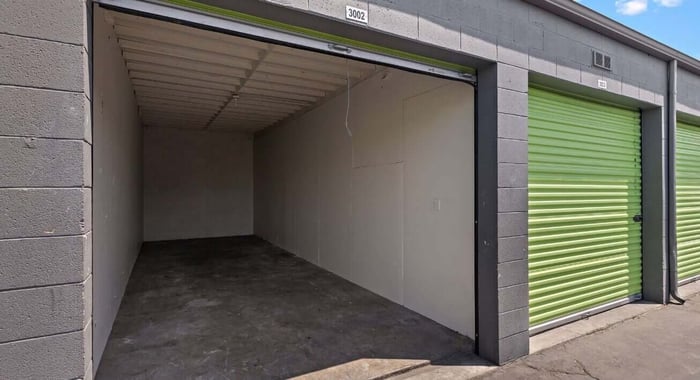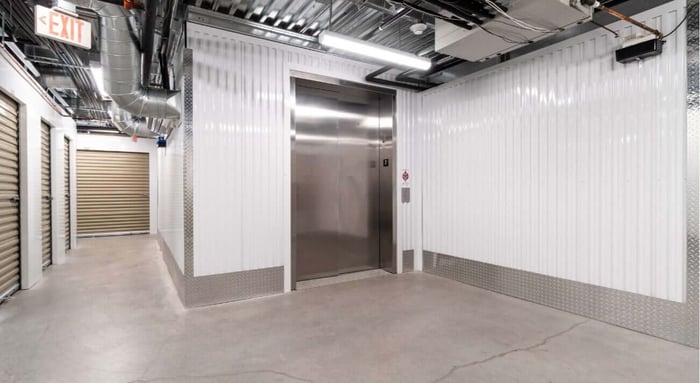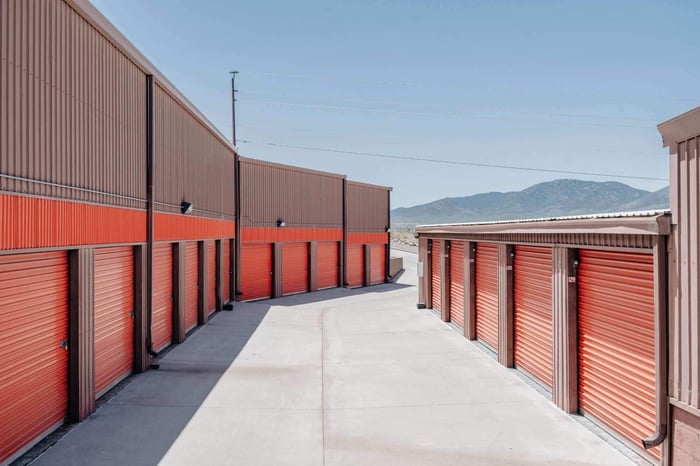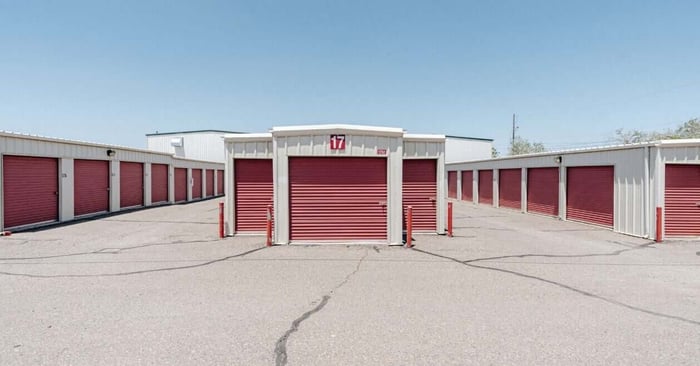When you need to leave your car for an extended period—whether for a long vacation, deployment, or seasonal storage—it's essential to take the proper steps to protect it. Many car owners in Santa Ana, CA, trust places like STORAGExperts for long-term vehicle storage. With options such as Uncovered Parking 10x25, you can safely store sedans, SUVs, or even trucks. However, parking it and walking away can lead to serious issues later. A thorough inspection, attention to the brakes, checking antifreeze levels, and remembering key car storage tips are all important things to remember. In this case, giving your vehicle the proper care can extend its life and preserve your rights to hassle-free use once you're ready to reclaim your space.
This is to ensure your vehicle stays in top condition. At the same time, in a storage facility, you must be mindful of several things—from fluids and battery care to protecting the interior, paint, and engine. This detailed guide will walk you through all the steps, precautions, and tips to help you avoid common problems and maximize your car storage investment. Each car storage tip we share increases your chance of keeping your vehicle in excellent condition. We've compiled insights from expert articles focusing on the values of preparation, the types of storage available, and the details that often get overlooked but make a big difference.
Choose the Right Storage Facility in Santa Ana
First, find the right car storage facility in Santa Ana, CA. Not every place is created equal. While Uncovered Parking 10x25 is ideal for larger vehicles like SUVs or trucks, you should also consider indoor storage options for more valuable or delicate cars, like classic sedans or sports cars. A secure, well-maintained storage facility will offer proper protection, ventilation, and even climate control if needed.
You'll want to look for a facility that offers flexible rates and prioritizes security—with locks, cameras, and gated access. This protects your car from theft, vandalism, and extreme temperature changes. Santa Ana's climate is generally mild, but humidity, sun exposure, and moisture can still cause long-term damage.
Clean the Vehicle Inside and Out
Before storing your car, give it a complete cleaning. Wash the exterior thoroughly, apply a good coat of wax, and rinse away any dirt, road grime, or salt that may have built up. Waxing adds a protective coat to the paint, shielding it from dust, moisture, and sun exposure.
Clean the interior as well. Vacuum up all crumbs, wipe down surfaces—especially leather, plastic, and vinyl—and clear the air vents. Food remnants and leftover trash can attract rodents and pests, which could chew on wires, insulation, or other critical parts under the hood. Use fabric-safe cleaners for seats, and leave a box of baking soda inside to neutralize any lingering smell.
Check and Top Off All Fluids
Long-term storage means your car will be sitting idle for weeks or months. Start with an oil change, even if you're not due yet. Old oil contains contaminants that can damage your engine if left to sit. Top off other essential fluids, including brake fluid, coolant, transmission fluid, and windshield washer solution.
Also, check for leaks. Look under the vehicle for any signs of oil, coolant, or brake fluid escaping. Minor problems today can become big, costly issues later. Keeping everything topped up reduces the risk of internal corrosion and mechanical failure.
Add a Fuel Stabilizer to the Gas Tank
One of the most overlooked car storage tips is treating your gas tank. Gasoline begins to degrade in just 30 days. As it breaks down, it forms gum, varnish, and deposits that can clog your fuel tank and injectors.
Fill the tank completely and add a quality fuel stabilizer to prevent this. Drive the car for 5–10 minutes after adding it so the stabilizer circulates through the entire fuel system. A full gas tank also prevents internal rust from forming due to moisture in the tank.
Maintain the Battery Properly
Another common problem with long-term vehicle storage is a dead battery. If left unattended, even new batteries can lose charge due to small drains from electronics or clocks. You have two main options.
First, you can disconnect the battery entirely. Remove the negative terminal to prevent slow discharging. Alternatively, if your storage facility has electrical access, use a trickle charger to keep the battery topped off. This is especially useful for modern cars like Honda, Toyota, or Subaru, which often have sensitive electronics.
Avoid Flat Spots on Tires
When a car sits too long in one spot, the tires can develop flat spots from supporting the vehicle's weight without movement. Check tire pressure and inflate slightly above the recommended PSI to account for air loss over time. If you want to go the extra mile, consider using jack stands to lift the car and remove pressure from the rubber and rotors.
If you store your car seasonally every year, consider replacing the tires with inexpensive ones and storing your good set elsewhere. This adds an extra layer of protection and saves your quality tires for when you're back on the road.
Use a Quality Car Cover
A breathable car cover is an affordable and effective way to protect your vehicle from dirt, dust, and moisture. Make sure it fits snugly and isn't made of plastic, which traps moisture and can lead to mold and mildew. Whether storing sedans, SUVs, or trucks, always opt for a soft material like cotton or wool that won't scratch the paint.
Covering your car also prevents sun damage to the interior and keeps pests from nesting under wiper blades or mirrors. IA high-quality cover is essential if you're using Uncovered Parking 10x25,
Protect Against Pests and Rodents
Small animals like mice and rats can cause severe damage to vehicles in storage. They chew wires, build nests, and leave droppings that can ruin the interior. Steel wool or rubber seals are used to block off entry points like the exhaust pipe or air intake.
Avoid storing snacks or food-related items inside. You can also set precautions like traps or scented deterrents (peppermint oil, dryer sheets, or even mothballs) in and around the vehicle. Some people place jack stands under the vehicle not just for tire protection but to make it harder for rodents to climb in. Facilities offering Storage Units in Santa Ana often recommend these preventative measures to help protect your car from pests during long-term storage.
Skip the Parking Brake
It might seem natural to engage your parking brake when storing your car, but doing so long-term can cause the brake pads to stick to the rotors. This can result in problems when you finally drive the car again.
Instead of using the brake, block the wheels with sturdy chocks. This keeps your vehicle stationary without risking internal braking system damage.
Take Final Storage Preparation Steps
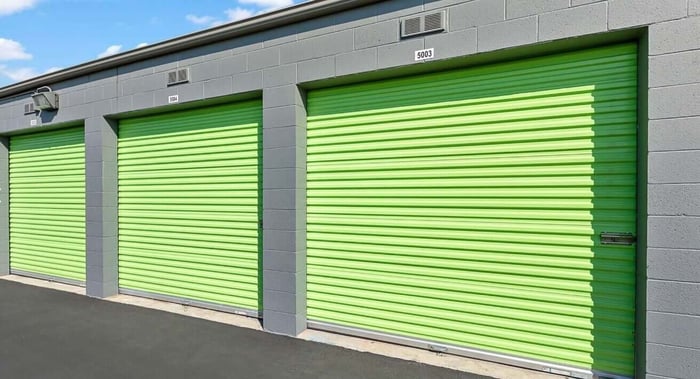 Follow expert tips for storing your car at STORAGExperts in Santa Ana, California to maintain its performance and prevent long-term issues.
Follow expert tips for storing your car at STORAGExperts in Santa Ana, California to maintain its performance and prevent long-term issues.Here are a few last-minute tips to ensure everything's in order before closing the unit at your Santa Ana, CA, storage facility.
- Check insurance: Confirm your car insurance covers non-driving storage. Some policies offer storage-only coverage that reduces price while maintaining protection.
- Roll up all windows to limit air and humidity entry.
- Consider installing a small dehumidifier or moisture absorber inside the interior to reduce moisture and smell.
- Leave your car in neutral if it's a manual transmission, and avoid using the brake.
Monitor Your Vehicle Periodically
Visit your car storage facility every few weeks to check on your vehicle. Look under the hood for any signs of leaks, nests, or chew marks. Wipe off any dirt or dust, check fluid levels, and boost the battery quickly.
Use a car maintenance app to track when you last checked fluids, cleaned the interior, or changed the oil. That way, you can stay on top of everything, even during long-term storage.
Car Storage Options for Santa Ana Drivers
Santa Ana offers several car storage facility options, including STORAGExperts, known for offering Uncovered Parking 10x25. Whether you're storing a Subaru, Toyota, or classic Honda, local drivers often look for reliable spaces that fit different vehicle types—from trucks to sedans.
Uncovered Parking 10x25 spaces are especially useful for larger vehicles. They provide a practical and accessible solution for long-term storage needs in the area, with added security features for peace of mind.
Final Thoughts
Long-term car storage doesn't have to be complicated but requires care. You can avoid rust, corrosion, dead batteries, flat tires, and pesky rodents with the proper steps, tools, and checklist. Follow the advice above and enjoy peace of mind knowing your vehicle is safely stored and ready for action when you return.
Whether you're heading out for vacation, making room in your garage, or protecting a valuable car during seasonal downtime, a good car storage plan ensures you'll come back to a car that's just as clean, safe, and functional as the day you left it.
If you're in Santa Ana, CA, and want affordable car storage with excellent service, visit STORAGExperts and ask about Uncovered Parking 10x25 today!
Frequently Asked Questions
Is it better to store my car indoors or outdoors in Santa Ana, CA?
Storage decisions depend on your vehicle's value and exposure risks. Indoor storage is ideal for valuable or sensitive cars, while outdoor uncovered parking might be sufficient for less valuable vehicles if properly protected.
How can I prevent moisture buildup inside the car during long-term storage?
Use moisture-absorbing materials like silica gel packs or dehumidifiers to help reduce moisture inside the cabin. This prevents mold, mildew, and unpleasant odors.
Can I store my car with a gas tank that is less than complete?
It's best to store the car with a full gas tank and a fuel stabilizer added to prevent degradation. A full tank also minimizes moisture buildup inside the tank.
What should I do if I notice rodents or pests while inspecting my vehicle in storage?
If pests are noticed in your vehicle, inspect for entry points, such as exhaust pipes and vents. If necessary, use traps or repellents to address the problem and prevent further damage.
Can I store my car with the parking brake engaged?
Using the parking brake long-term is not recommended as it could cause the pads to stick. Instead, use wheel chocks to keep your car stationary.
How often should I check my car in storage if I can't visit regularly?
Ideally, you should check your car every few weeks if you can't, consider asking a friend or family member to check it periodically for signs of damage or pests.
Do I need to clean the car's undercarriage before storage?
Cleaning the undercarriage is essential to remove road salts, dirt, and grime that could lead to corrosion during storage. It's a good idea to have it washed thoroughly.
Can I store a manual transmission car differently than an automatic?
Avoid using the parking brake for manual transmission vehicles. Instead, leave the car in gear with wheel chocks in place. For automatics, simply use the parking brake with caution.
How long is it safe to store a car without starting it?
A car can typically be stored for 3–6 months without starting, but proper storage preparations and regular inspection are essential.
Can I store a car with the windows slightly open to improve ventilation?
It's best to leave windows closed to prevent moisture and debris from entering. Instead, use a breathable car cover or a dehumidifier inside to maintain ventilation.

